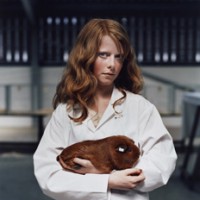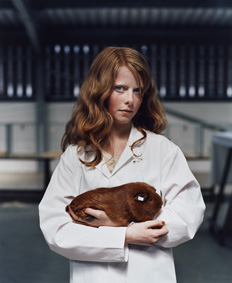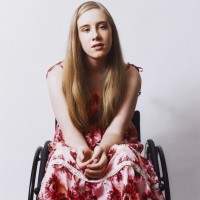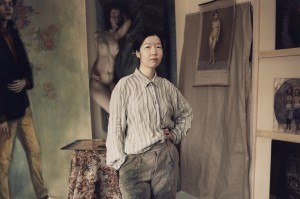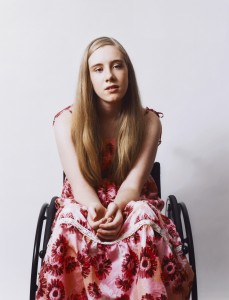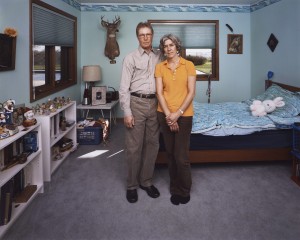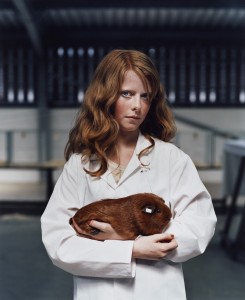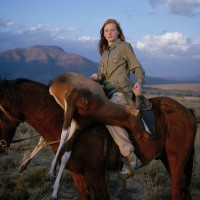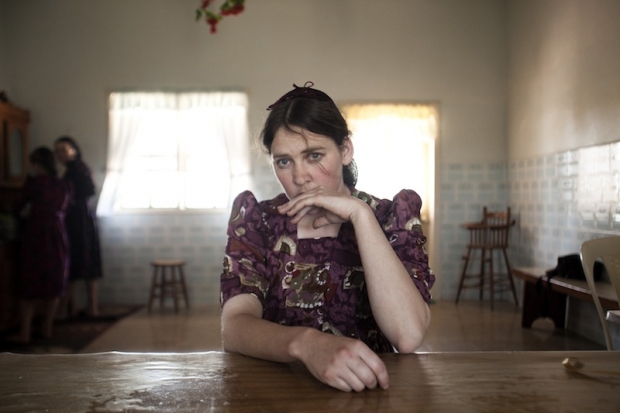 Margarita Teichroeb by Jordi Ruiz Cirera. 1st Prize (Copyright Jordi Ruiz Cirera).
Margarita Teichroeb by Jordi Ruiz Cirera. 1st Prize (Copyright Jordi Ruiz Cirera).
This year the Taylor Wessing Photographic Portrait Prize, hosted at the National Portrait Gallery in London, had 5,340 entries from from 2,350 photographers, some professional, some student, some amateur. Of those entries, 60 are exhibited at the gallery. One picture is judged the winner, and then there are second, third, and fourth placed prizes to be had, too.
I popped along and took a look early in November and Gareth went this week. My immediate reaction to the overall exhibition was that it felt very muted and subdued, with relatively few bold colours. Just like everything, photography has fashions and right now, that's in vogue. Gareth, however, goes into this trend more deeply in his analysis, so I'll hand you over to him, and his impressions of the winning entry and the runners up.
This year's winning entry was Margarita Teichroeb by Jordi Ruiz Cirera. What I have noticed is that, every single year, people react angrily to the winning entry and indeed to many of the shortlisted images. Because I hate being happy, I decided to trawl some comments underneath online articles announcing the winners. Thankfully, it wasn't all bad, but the main complaint was the somewhat reductive argument that it was 'just a woman sat down, looking worried.'
This attitude baffles me. I feel like these comments are the result of a combination of bitterness and laziness, or a reluctance to make an effort to interpret the image. Saying that Margarita Teichroeb is 'just a woman sat down looking worried,' is like saying The Exorcist is 'just a scary film about a little girl.'
Margarita is a woman living in a Mennonite community in Bolivia. Mennonite communities often frown upon and do not allow photography, believing it is a form of graven image. This is reflected in Margarita's deeply worried expression. She is attempting to obscure her face, possibly partly subconsciously, and it is clearly a uncomfortable experience for her.
In print, it is a breathtaking image. The sense of connection between the viewer and the subject as you look into her eyes is really quite powerful: the emotion captured is so raw and real. In being so very nervous, Margarita has laid her honest feelings completely bare in front of us. People often speak of a person looking 'natural' in an image, which they always translate as looking relaxed, essentially. However, I think a 'natural' portrait comes in many flavours, the key being the genuineness of the expression, regardless of what emotion is being expressed. Margarita has a genuine, natural expression of concern on her face.
The deeper level to the image is what it says about the Mennonite community. The beliefs held by these people are clearly strong religious beliefs: Margarita's concern and conviction tell a story of the wider community and give us a telling insight into the isolation and strict rules which typify this community.
For those reasons, I agree with the judges' decision to award it first prize: Margarita Teichroeb is an image that captures genuine, raw emotion whilst simultaneously telling a much wider story. It is not 'just a woman sat down looking worried.' I would recommend you take a moment to visit www.jordiruizcirera.com and have a look at the series that the image came from. They are excellent. I particularly like the contrast between the children's portraits and those of the adults. The children have not yet been moulded by the strict rules of the community the way the adults have, and this is clear to see in their significantly more relaxed and confident expressions.
Addressing the other winning entries, I mostly agree with the judges' decisions here, also, Spencer Murphy's Mark Rylance being my personal favourite. One image that doesn't grab me, however is The Ventriloquist by Alma Haser.
Like any art form, photography often goes through fashion spells. At present, there seems to be a penchant for low contrast images, sometimes with no true blacks, sporting very neutral, window light tones. As it happens, this style really appeals to me, as there is often a feeling of truth to the final shot: a feeling of the image not hiding anything.
With The Ventriloquist, however, it feels as if the photographer is a little too aware of the current trend and has processed it in that style for no real reason other than it being currently popular. I also feel that it has been processed quite clumsily. The story behind the image of two friends is that the photographer 'wanted to turn their verbal banter into a visual image.' I appreciate that interpretation can be a very personal thing, but to me, 'banter' conjures up images of fun and affectionate jibing, a key element of a close friendship. Her decision to capture them both with neutral, blank expressions is at odds with this idea.
I feel that all the visual decisions made in the image were to tick the boxes, so to speak, of what is currently appetising in photography. The clumsy processing and attempts at distant, emotionless expressions leave me cold and feel incongruous to the message and I feel like it doesn't belong in the winning entries. A better replacement for a posed, conceptual portrait would have been Nadia Lee Cohen's absolutely stunning American Nightmare, for example. If the judges were more interested in the sense of companionship and the relationship between the two subjects, a better fit would've been the delightfully simple yet beautiful Rosa and Adoney by Sarah Booker.
Nevertheless, I felt that the entire selection of 60 images were varied and a fair final decision, even if I disagreed with some of the entries.
Should you have the opportunity to pay a visit, do go. It costs £2, and we'd be very interested to hear what you have to say about the entries. The Taylor Wessing Photographic Portrait Prize 2012 exhibition is at the National Portrait Gallery, London, from 8 November 2012 to 17 February 2013.
Gareth Dutton is a portrait and editorial photographer based in London. You can see his work here.






